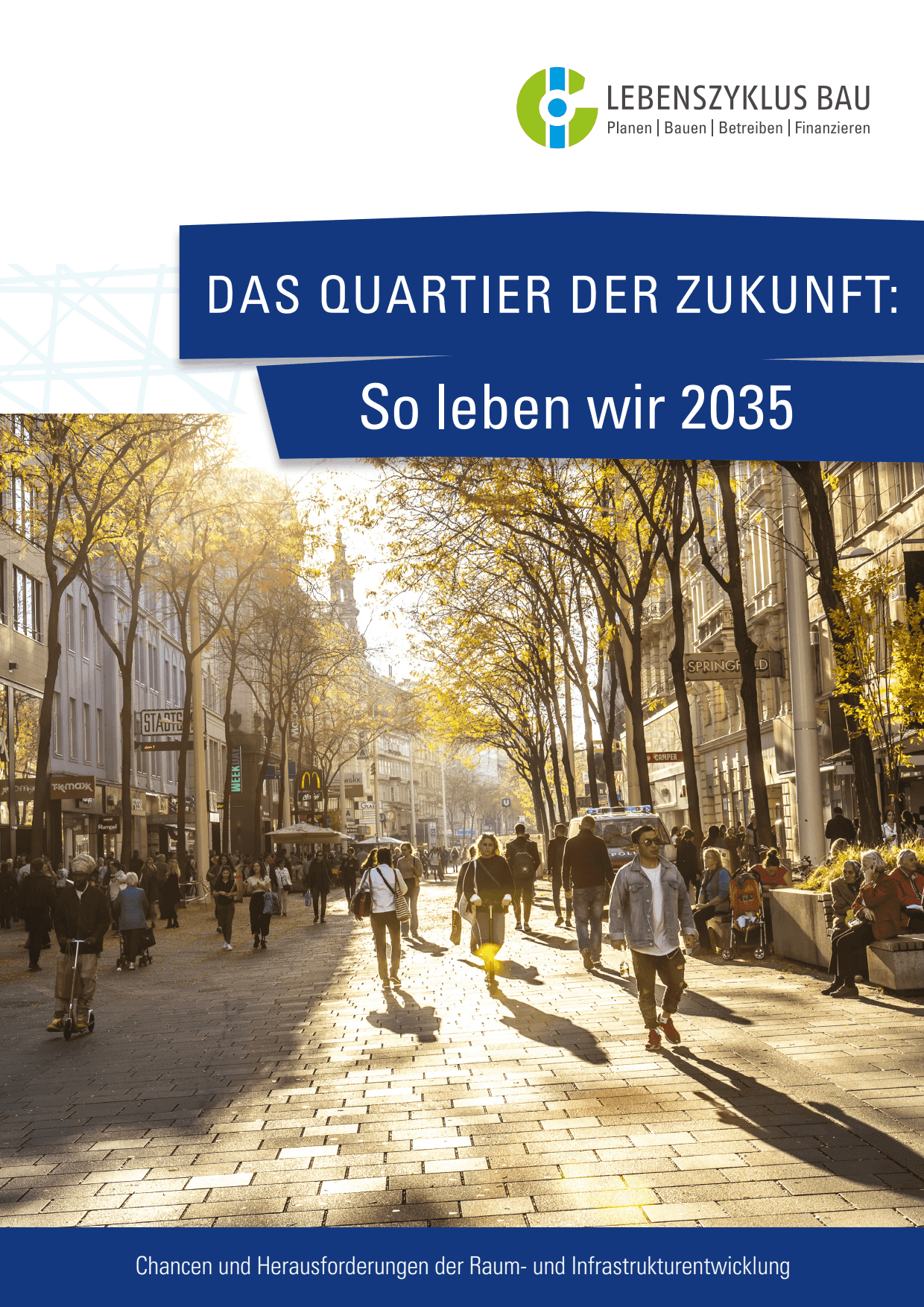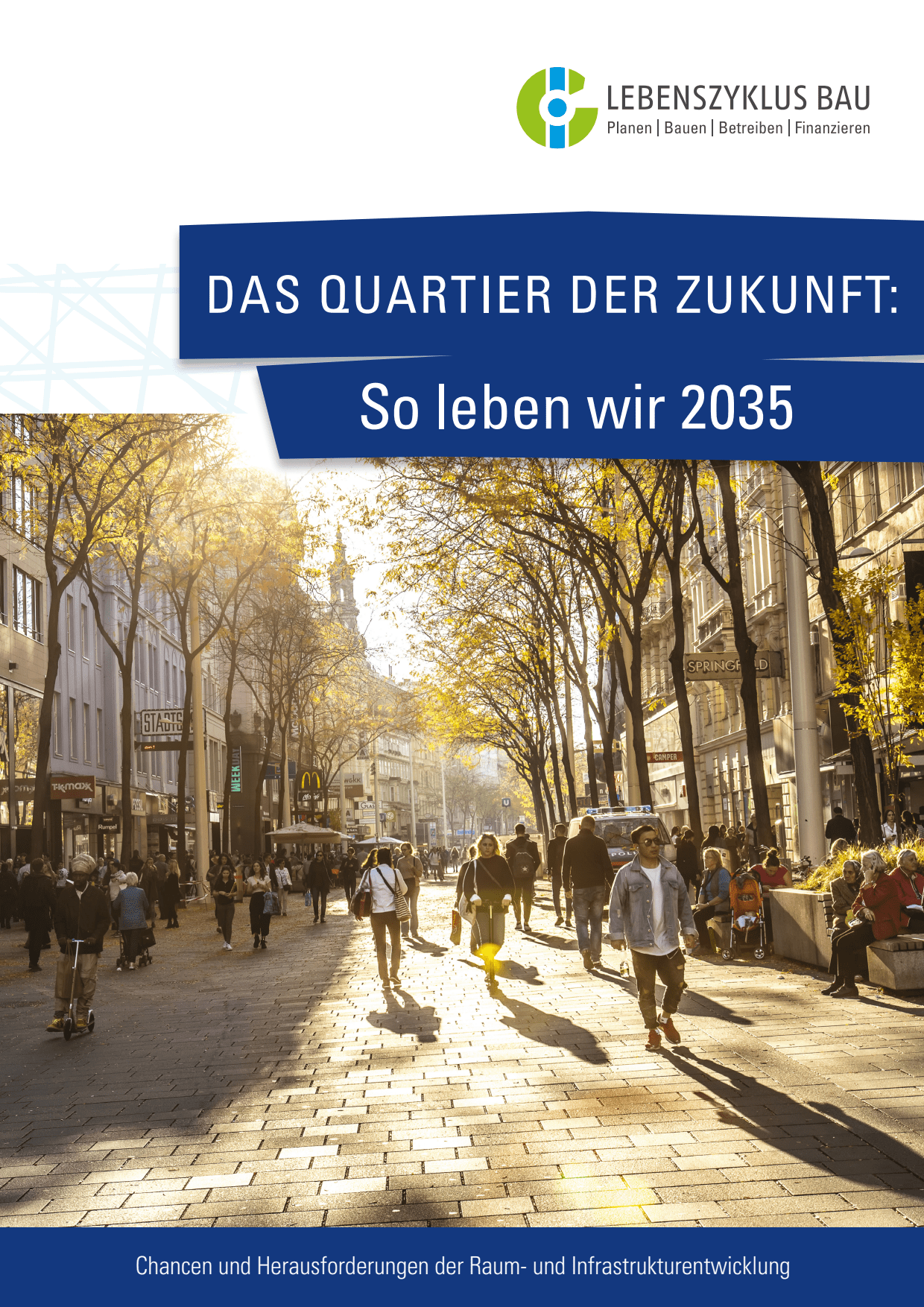🌍Kontext und Autoren
Das Dokument mit dem Titel Leitfaden-Raum-Infrastruktur wurde von IG Lebenszyklus Bau veröffentlicht und befasst sich mit der Zukunft des urbanen Lebens und der Infrastrukturentwicklung. Es wurde von einer Arbeitsgruppe unter der Leitung von DI Christoph Müller-Thiede von M.O.O.CON und Arch. DDI (FH) Dominik Philipp von Dietrich | Untertrifaller Architekten erstellt. Zielgruppe sind öffentliche Behörden, Stadtplaner sowie Fachleute aus den Bereichen Immobilien und Bau, um Leitlinien für eine nachhaltige Stadtentwicklung im Kontext des Klimawandels zu bieten.
🌡️Klimakrise
Der Leitfaden unterstreicht die dringende Notwendigkeit, gegen den Klimawandel aktiv zu werden. Die Ergebnisse des IPCC zeigen, dass menschliche Aktivitäten die Hauptursache für die globale Erwärmung sind. Trotz internationaler Vereinbarungen wie dem Pariser Abkommen sind die Bemühungen in Österreich unzureichend, und die Treibhausgasemissionen sind seit 1990 leicht gestiegen.
🏗️Infrastrukturentwicklung
Es wird betont, dass die räumliche und infrastrukturelle Entwicklung eine Schlüsselrolle bei der Reduzierung von Emissionen spielt. Der Leitfaden plädiert für einen systematischen Ansatz anstelle isolierter Optimierungen. Die urbane Planung sollte die Vernetzung von Gebäuden, Transport und menschlichem Verhalten berücksichtigen.
🔑Handlungsfelder
Der Leitfaden identifiziert zentrale Handlungsfelder:
- Quartiersebene: Fokus auf gemischte Nutzung von Stadtteilen zur Verringerung der Reisewege und Förderung nachhaltiger Mobilität.
- Gebäudeebene: Förderung flexibler Gebäudeentwürfe, die eine adaptive Wiederverwendung und Energieeffizienz ermöglichen.
- Organisationsebene: Förderung digitaler Arbeitsumgebungen zur Reduzierung des Pendelverkehrs und des Büroflächenbedarfs.
📊Empfehlungen
Um diese Ziele zu erreichen, empfiehlt der Leitfaden:
- Entwicklung multifunktionaler Stadtviertel mit integrierter lokaler Infrastruktur.
- Implementierung nachhaltiger Mobilitätskonzepte, insbesondere in ländlichen Gebieten.
- Durchführung detaillierter Bewertungen von leerstehenden Industrie- und Büroflächen zur Optimierung vorhandener Ressourcen.
- Förderung flexibler Gebäude und Wiederverwendung von Materialien zur Minimierung der Umweltbelastung.
🏢Zukünftige Arbeitsplätze
Das Dokument setzt sich für dezentralisierte Arbeitsplätze und digitale Kollaborationstools ein, um den physischen Bürobedarf und die Pendelzeiten zu reduzieren.
📅Fazit
Der Leitfaden betont die Bedeutung ganzheitlicher Planungsansätze, die Umweltaspekte in alle Aspekte der Stadtentwicklung integrieren. Durch diese Maßnahmen soll bis 2035 eine signifikante Reduzierung der CO2-Emissionen erreicht und nachhaltige Lebensumgebungen gefördert werden.

